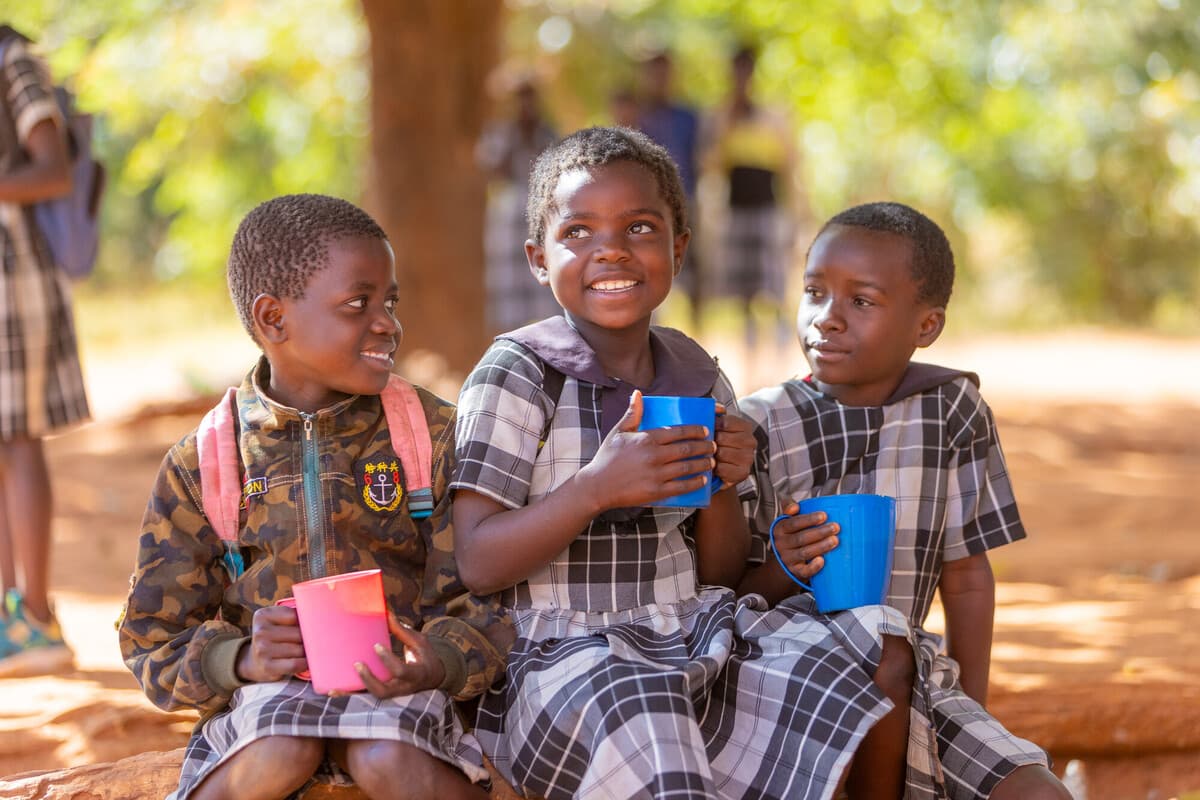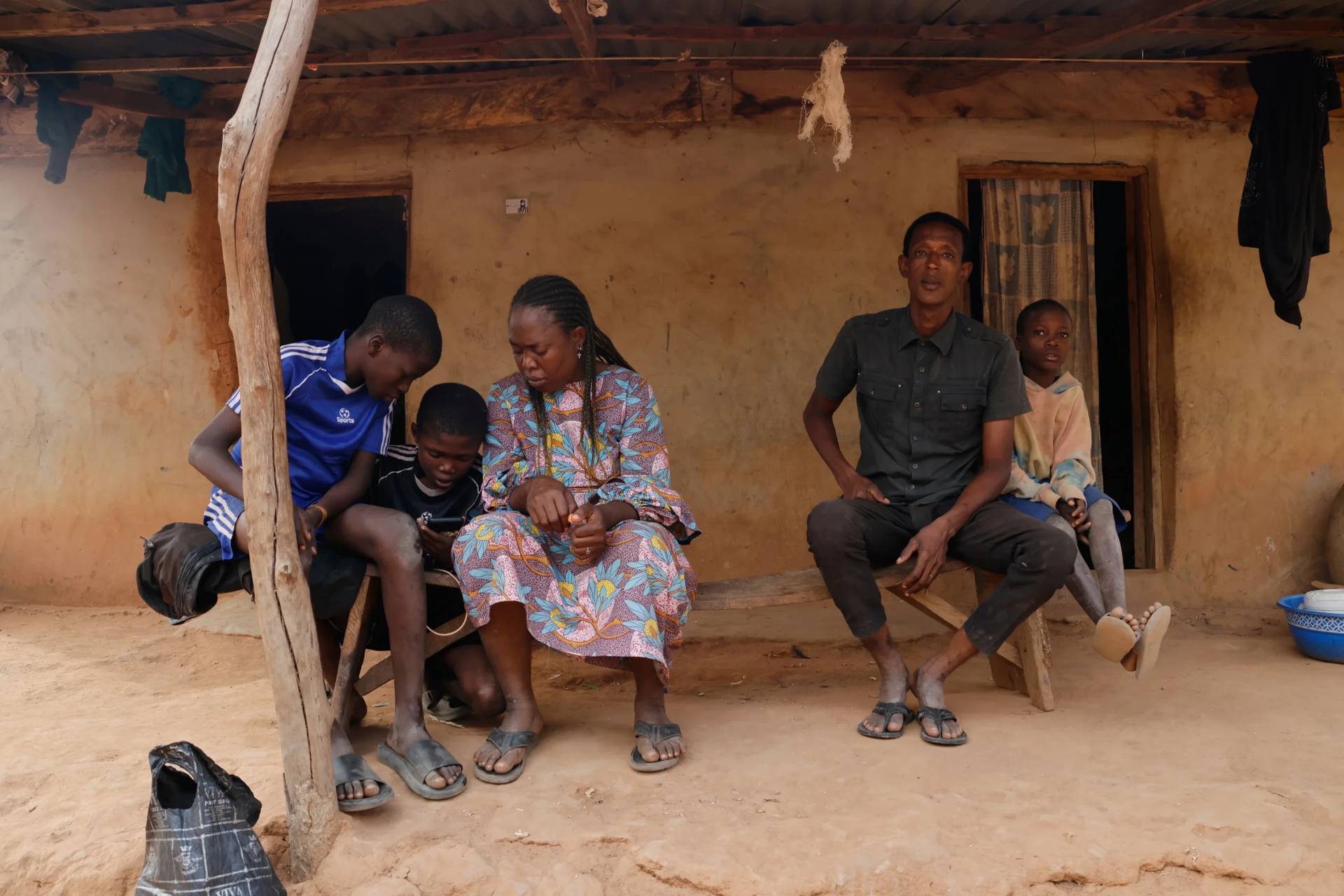LEICESTER, United Kingdom – For ten years, the Scotland-based charity Mary’s Meals has been letting children attending schools in Zambia a chance to have a full meal.
The charity currently feeds more than 500,000 children in over 1,000 schools in 13 districts throughout the African country’s Eastern Province, which is currently suffering acute drought conditions.
World Poverty Day is marked on Oct. 17, and Mary’s Meals is highlighting its work in Zambia, although the charity feeds more than 2.4 million children around the world every school day.
Fatness Nthal lives hear Kapara Primary School, and said when she I first heard Mary’s Meals was coming to the school, she went to the initial meetings.
“Mary’s Meals team called the community to a meeting and explained that they want to start providing porridge to learners at the school so that learners have something to eat while in school. As a community we were happy and excited,” she said.
“The Mary’s Meals team came through to teach us how to cook the porridge, how to practice proper hygiene and how to dress when cooking and serving the children porridge. We work together,” Nthal explained.
“Mary’s Meals spends millions to buy food. We need to come in to cook,” she added.
“I am widow. As I was volunteering at the kitchen, I realized the huge help this program was rendering to me and my children. I have had children and grandchildren at this school,” she said.
Nthal said in times when there is hunger in their homes, the children come to school to have a cup of porridge.
“When they get home, they are still full, they just continue playing,” she said.
The charity is named after Mary, the mother of Jesus. Its founders are Catholic, although it is not an official Catholic organization.
The United Nations says there are an estimated 67 million primary school-age children are out of school around the world, many due to food insecurity, adding around 25 percent of children are currently experiencing severe food poverty.
Mary’s Meals says even for those attending school, hunger is one of the biggest barriers to concentration and learning – which is why they provide nutritious meals during school hours.
On Oct. 17, the charity said evidence shows that academic results in Zambia’s Eastern Province have improved steadily during the past ten years, with anecdotal evidence linking this to their intervention at the primary level.
“I can’t emphasize enough how amazing this 10 year journey has been and how grateful we are for the support we have received from all stakeholders – overseas supporters who raise funds, Zambia authorities for giving us a great environment to work in, the communities we work with on a daily basis to keep the promise that every child receives one daily meal in their place of education. We believe and have treated all these relationships as the core resource for our collective success and we are looking forward to another rewarding 10 years,” Panji Kajani, Director of Mary’s Meals Zambia, told Crux.
Mary’s Meals also says it only takes about $24 to feed a child a whole school year in Zambia.
Linda Shawa, a Zambian student at Nyakutwa Primary School, says many of the pupils from her area come to school without eating anything, adding “at least when we come to school we have some porridge [donated by Mary’s Meals] in the morning.”
“If there was no porridge in school, we would have to stay hungry. At home at times there is no food, so I come to school on an empty stomach. I come without eating anything,” she said.
“This porridge helps me. It helps most of us to not to stay hungry in school as we do not have meals in the morning. In some instances, even when we knock off, we find that there is no food at home,” Shawa said, adding she wants to be a doctor when she grows up.
The United Nations World Food Program (WFP) says more than half of Zambia’s population still lives below the poverty line, and the African country is facing it worst drought on record due to the ongoing effects of El Niño, with some regions receiving less than 50 percent of usual annual rainfall leading to a knock-on effect on food security.
The WFP says malnutrition rates remain among the highest in the world, with 48 percent of the population unable to meet their minimum-calorie requirements and more than one-third of children aged under the age of 5 being stunted, meaning they have impaired growth and development.
Mary’s Meal’s claims as a result of their work, places of education attract more children to the classroom giving them opportunity learn, reducing food insecurity within families and giving hope for the future.
“As a leader, I recognize how central the Mary’s Meals Zambia team has been from 2014 to date in ensuring we fulfil our vision and in driving expansions,” Kajani said.
“I am happy to have led such a dedicated and passionate team of experts. In short: we started in 25 schools with just over 18,500 children. We are now in 1096 schools with over half a million children. Over 300 million meals have been served since we started, and we are as dedicated as every to reaching more children,” he told Crux.
“By providing a daily meal at a place of education, Mary’s Meals creates a fundamental change in the lives of children who don’t have enough to eat and provides hope for today and tomorrow,” he said.
Follow Charles Collins on X: @CharlesinRome















